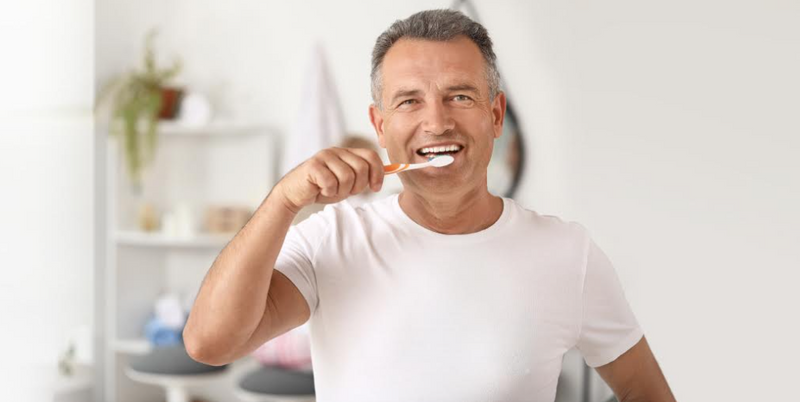

Approximately 38.4 million people in the United States have diabetes, which is about 11.6% of the population.[1] In addition to those who have diabetes, a sizable number of people are prediabetic, which means they have a higher-than-normal blood sugar level. The estimate for prediabetics is 97.6 million people aged 18 years or older (38.0% of the adult U.S. population) [2] With diabetes the 8th leading cause of death in the United States, it is important not only for those with the disease to manage their health but for prediabetics to do so as well.
Prediabetes risk
Without changes in lifestyle, adults and children with prediabetes have a considerable risk of developing Type 2 diabetes, where the body does not use insulin properly. If a person cannot control blood sugar with the right foods and exercise, they may need medication or insulin to manage it.
A normal blood sugar reading is less than 110 mg/dl; greater than 126 is diabetes. If fasting blood sugar lands somewhere between those numbers, it is considered prediabetes.[3]
A simple blood test is the easiest way to find prediabetes. The AIC test is the most exact. It determines the percentage of glucose (sugar) attached to the hemoglobin in blood. A score of 5.9 and below is considered normal. Anything between 5.7 and 6.4 is considered prediabetes, and 6.4 and above is full-blown diabetes.[4]
Signs of prediabetes
Without a blood test, it is difficult to determine prediabetes. But there are signs and patterns that can suggest someone has prediabetes or is moving toward it. Among those signs to discuss with a health care professional are:
Skin changes: Darkened skin on certain parts of the body: neck, armpits, and groin.
Excess fat: Excess weight, especially around the middle, heightens the chances of becoming resistant to insulin, a major risk factor in developing diabetes. Excess weight puts stress on the pancreas to produce enough insulin and makes it harder for the insulin produced to do its job. [5]
Sleeping trouble: Trouble sleeping can cause weight gain, raise prediabetes risk. Also, sleep disorders like sleep apnea can affect blood sugar, too. There is a link between sleep apnea and insulin resistance.
Frequent urination and thirst: To rid the body of excess sugar, the kidneys need to make more urine. Doing so uses up more water in the body, which can even be pulled from your tissues. By losing lots of water, you are dehydrated and thirsty. Drinking more fluids to satisfy the thirst then leads to more urination.
Low energy: Since the body is less able to use sugar from the blood, it can lower energy levels.
Blurry vision: Studies report that 5% of people with prediabetes have diabetic retinopathy, which happens because elevated blood sugars can damage blood vessels in the retina.[6]
Numbness and feet tingling: Prediabetes may lead to the development of neuropathy, even without having Type 2 diabetes.[7] With numbness, a foot injury, cut or even a blister that could result in an ulcer can go unnoticed. Foot ulcers are a considerable problem for people with diabetes, often leading to hospitalization. To prevent skin problems, skin should be clean and dry and moisturize.
Six natural ways to help reverse prediabetes
A diagnosis of prediabetes does not mean you will develop Type 2 diabetes. Here are tips on how to reverse prediabetes naturally.
Change your diet: By incorporating low fat and low calories foods into your diet and help restore blood sugar levels and you can help prevent Type2 diabetes and potentially reverse prediabetes. Such foods include:[8]
· fruits with complex carbohydrates
· vegetables
· lean meats
· whole grains
· healthy fats, such as avocado and fish
Exercise: Another risk factor for prediabetes is lack of physical activity. Exercise in addition to tis other benefits to boost energy and improve mental health can lower blood sugar by increasing insulin sensitivity. The CDC recommends regular physical regular physical activity means getting at least 150 minutes a week of brisk walking or a similar activity. That is 30 minutes a day, 5 days a week.[9]
Lose weight: Even losing as much as 5% to 10% percent of body fat can lower your A1C level. It also might help to eat several smaller meals throughout the day instead of three large meals. [10]
Get enough sleep: As noted, too little sleep or poor sleep quality can increase insulin resistance. Seek medical help if you have insomnia or suffer from sleep apnea. Also:
· Wake up and go to bed at around the same time every day, even on weekends.
· Keep your room dark, quiet, relaxing, and cool.
· Remove electronic devices from the bedroom.
Drink water: Stay hydrated. Water helps to support healthy glucose levels. When you have less water in your body, the concentration of sugar in your blood will increase.
Manage stress: When you are under stress, your body releases hormones, such as cortisol and adrenaline, which may may it harder for insulin to work properly, called insulin resistance. If stress continues, it can keep your blood sugar levels high. Getting rest and setting aside time for relaxation can help manage stress levels.
These are ways to reverse prediabetes. You also should collaborate with a nutritionist to develop a proper diet and ask your doctor and others on your healthcare team for suggestions and available resources to help you manage and potentially reverse prediabetes.
[1] “National Diabetes Statistics Report,” CDC, May 15, 2024. https://www.cdc.gov/diabetes/php/data-research/index.html
[2] Ibid
[3] Reiff Ellis, Rachel, “7 Prediabetes Symptoms You Shouldn’t Ignore,” Prevention, August 6, 2018. https://www.prevention.com/health/a20514144/prediabetes-symptoms/
[4] Ibid
[5] Ibid
[6] Doherty, Colleen, “Symptoms of Prediabetes,” verywell health, August 8, 2022. https://www.verywellhealth.com/prediabetes-symptoms-6361970#toc-possible-symptoms
[7] Biology Insights team, “Prediabetes Neuropathy: Is Early Nerve Damage Possible?” Biology Insights, April 29, 2025. https://biologyinsights.com/prediabetes-neuropathy-is-early-nerve-damage-possible/
[8] Higuera, Valencia, “8 Lifestyle Tips to Help Reverse Prediabetes Naturally,” Healthline, January 7, 2025. https://www.healthline.com/health/diabetes/how-to-reverse-prediabetes-naturally
[9] “Prediabetes – Your Chance to Prevent Type 2 Diabetes,” CDC, May 15, 2024. https://www.cdc.gov/diabetes/prevention-type-2/prediabetes-prevent-type-2.html
[10] Higuera, Valencia, “8 Lifestyle Tips to Help Reverse Prediabetes Naturally







